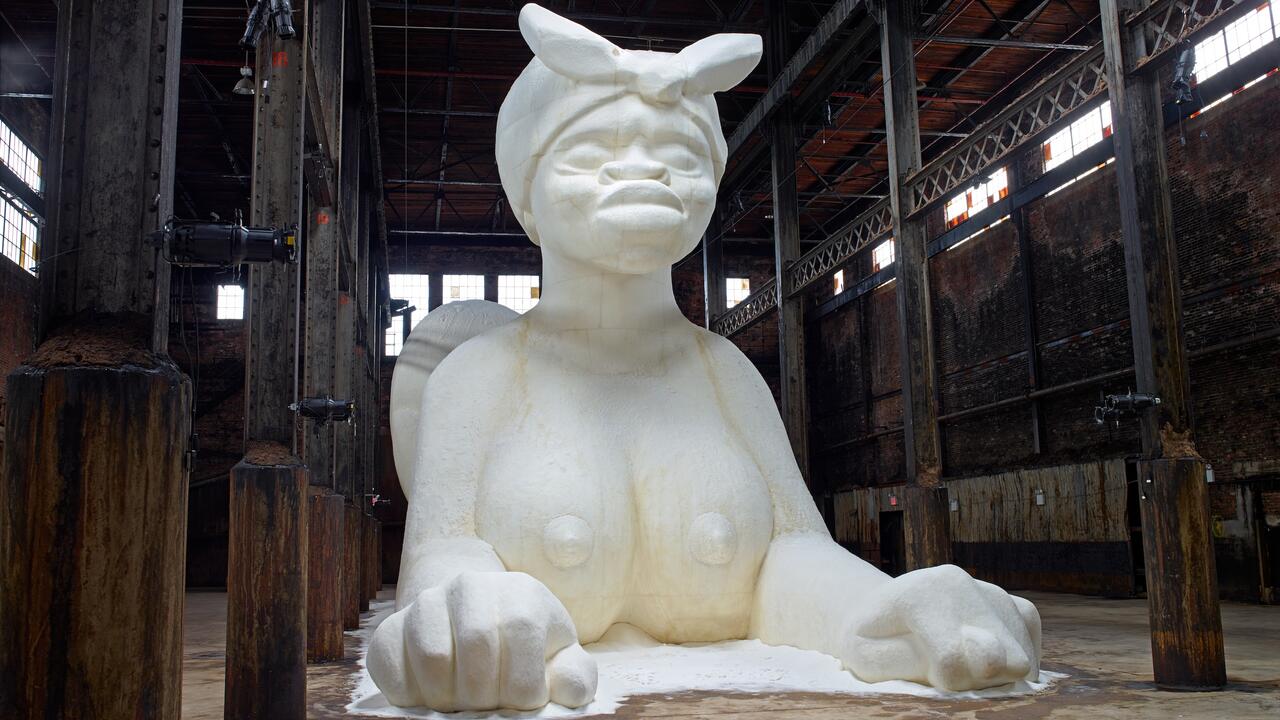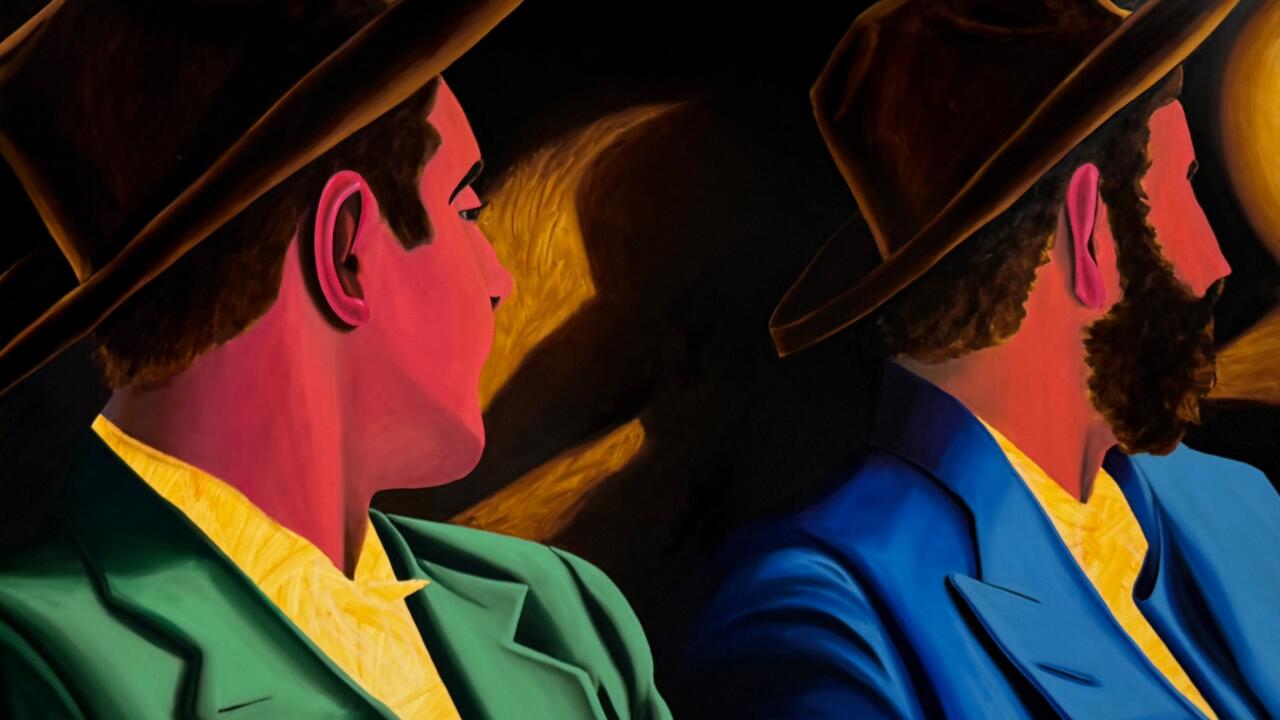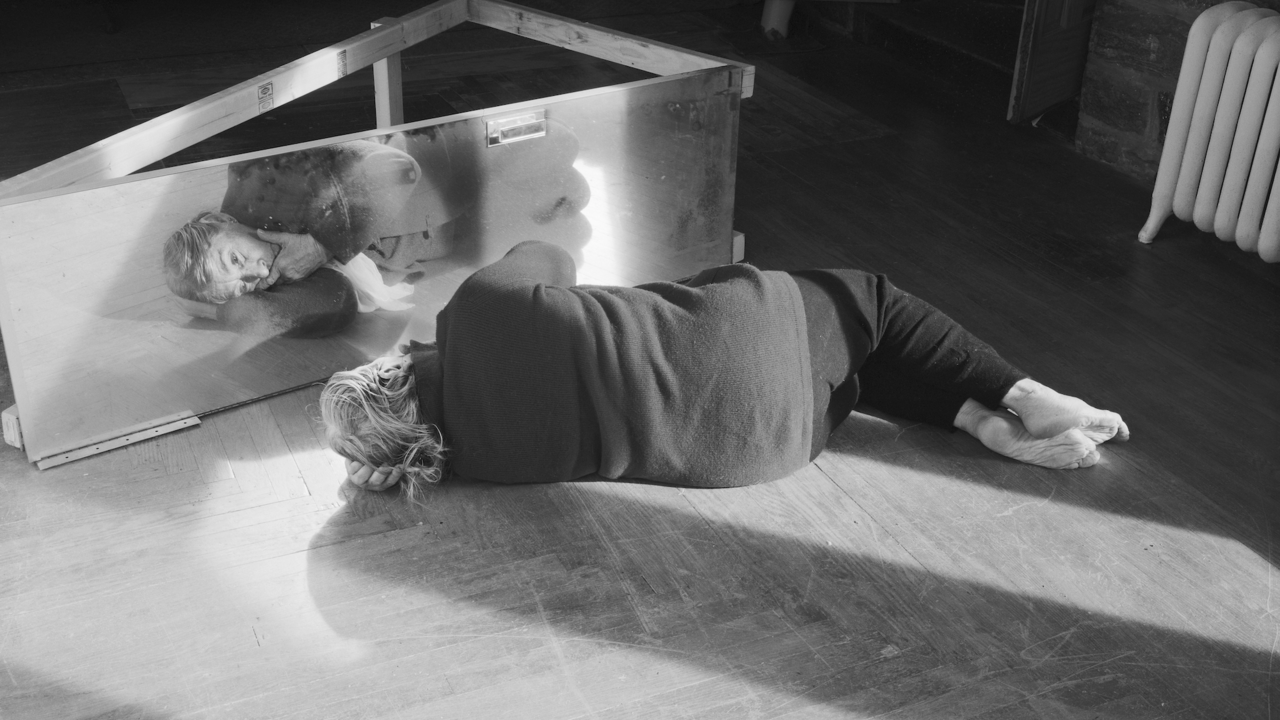The 2019 Whitney Biennial Is Unafraid to Be Beautiful
Most works carry a subtle political charge that amounts to a thoughtful critique of the injustice of our times
Most works carry a subtle political charge that amounts to a thoughtful critique of the injustice of our times

We ask too much of our biennials. They must be politically engaged, but not preachy; visually appealing, but not formalist; comprehensive but uncluttered. Yet the curators of this year’s Whitney Biennial, Rujeko Hockley and Jane Panetta, have managed to meet all these criteria in a show full of aesthetic experimentation. Unexpected connections are drawn between works of diverse media and content in galleries that feel airy and spacious, despite an artist list of 75 – 75 percent of whom are under the age of 40. Most works carry a subtle political charge not evident at first glance, amounting to a thoughtful critique of the injustice of our times, rather than an outright protest.
This will disappoint anyone rearing for a fight after the revelation last November that the Vice Chair of the Whitney’s board, Warren B. Kanders, sells the tear gas being used along the US-Mexico border. Artist Michael Rakowitz pulled his work from the biennial in protest; Forensic Architecture made a film about Kanders’s company, Safariland, and the chemical weapons they manufacture. A number of groups, including Working Artists and the Greater Economy (W.A.G.E.) and Decolonize This Place, pressured participating artists to respond.

For Forensic Architecture, a group of meticulous field researchers based in London more akin to an NGO than an artist collective, Triple-Chaser (2019) is a hasty work of speculation. There’s none of the precise evidence for which they’re best known, no new revelations of violence or other misdeeds. Instead, FA have trained a computer to identify Safariland ‘triple chaser’ tear gas canisters when they’re spotted by cameras in the field. Since there haven’t been any known attacks since its making, the video is mostly a sequence of digital renderings. The project is truly admirable for taking on a museum board member directly, and the curators are brave for including it. Yet as an artwork it’s remarkably flat, lacking the pathos of FA’s past studies of human suffering.
Similarly, as an opening statement screened across from the museum’s elevator bank, Kota Ezawa’s animation of American football players taking the knee during the national anthem (National Anthem, 2018) is politically righteous yet safe. Its cartoon renderings lend the protests a cuteness that fails to suit their aim. A large-scale mural by Pat Phillips, Untitled (Don’t Tread on Me) (2019), is also too direct to be effective: a pair of hands hammers up a green banner bearing its titular phrase – a favourite Revolutionary War-era slogan of the Tea Party – behind a picket fence, like a snake in the grass. There’s a gun and a tear-gas canister here, too. Who among us doesn’t already know the score?
Tomashi Jackson’s Third Party Transfer and the Making of Central Park (Seneca Village-Brooklyn 1853-2019) (2019), on the other hand, is more subtle. Long strips of transparencies printed with collaged etchings of Seneca Village, a historic black settlement that was razed to make way for Central Park, as well as photographs of tenants’s rights protests and community board meetings, hang like thatch from an orange shop awning. ‘City Takes Third African American Owned Property Under Guise of Affordability’ reads a recent headline from Kings County Politics printed on a metal button, pinned to the surface of a neighbouring collage, The Woman is King (Mary and Marlene) (Simultaneous Contrast) (2019). The text refers to a New York City programme that has labelled several black and Latino-owned properties ‘distressed’ and handed them over to private developers. Racist seizure and segregation continue today.

Paul Mpagi Sepuya collages his photographs in altogether different ways, by layering scraps of discarded prints and reference material on the surface of studio mirrors and re-photographing them, so they occlude real bodies or objects in space. Here, he’s invited friends to shoot with him in his studio, and their cameras comingle to produce intimate double self-portraits. In Elle Pérez’s tender portraits of friends and lovers, pain is a form of agency. One subject with their chest bound in cling film is cradled by another in the black gloves of a tattoo artist or fisting top. Another image shows a cropped thigh bearing a bloody scar that spells out ‘DYKE’, in an obvious nod to Catherine Opie. Yet somehow these photographs are less visceral than Heji Shin’s ‘Baby’ series (2016-7), close-ups of newborns crowning their mothers’ birth canals, their heads so purple and misshapen they seem about to burst like grapes.

The pain of motherhood takes on another cast in Daniel Lind-Ramos’s Maria-Maria (2019), one of several standout assemblages in this sculpture-heavy show. A Madonna of lacquered palm fronds and plastic tubing with coconut breasts and a pearl-studded fabric halo, it was fashioned from debris the artist scavenged from the streets of Loíza, Puerto Rico, where he lives and works, in the aftermath of Hurricane Maria. His towering Centinelas (Sentinels, 2013), meanwhile – a battalion of nine even larger palm frond figures, armoured with pots and pans – isn’t the only group of sentinels on view: in roughly the same spot on the other side of the sixth floor, Wangechi Mutu’s Sentinels I & II (2019) are women whose strength flows from the earth from which they seem to have been sculpted (a mixture of paper pulp and rose quartz). The roots that shoot from their torsos remind me of the myth of Daphne, who turned herself into a tree to avoid being raped by Apollo. There is gentleness to match the defiance: for Poems by my great grandmother I (2017), Mutu fastened a pencil to the end of a hanging sculpture – an agglomeration of cow horns and branches – so that it draws quiet circles on an overturned pot.
A very different kind of constrained arm swings from the opposite wall: Carolyn Lazard’s Extended Stay (2019), a TV monitor on a peachy mechanical hospital mount streaming live cable, enabling viewers to share a sports match or news programme with distant patients receiving chemotherapy treatments. Lazard and Mutu’s works make surprisingly good company for a group of wall-mounted sculptures by Robert Bittenbender, tangled boluses of scavenged junk that look like they’ve been fished from a cat’s belly or a vacuum cleaner tube.

Outside, on the terrace, is Nicole Eisenman’s show-stopping Procession (2019), a motley parade of bronze, fibreglass and plaster figures, some of whom will slowly disintegrate in the summer rain. A jet-black giant pulls a cart atop which his pasty pal crouches, doggie-style, awaiting occasional puffs of smoke from his gaping anus. A faceless figure with trashcan lid cymbals seems unfazed by the farts in his face, or the cart’s bumper sticker, which inquires, ‘HOW’S MY SCULPTING? CALL 1-800-EAT-SHIT’. (The answer is very good.) Each figure in this farcical tableau finds dumb, flatulent pleasure in the heavy load it bears – a lesson, perhaps, on how to handle life’s burdens.
Few living artists are as original as Eisenman. Jeanette Mundt’s bewitching paintings of US Olympic gymnast Simone Biles cinching a perfect landing from a double vault, her body sliced by the bevelled edge of an invisible mirror, bear an unnerving resemblance to Lucy McKenzie’s 1998 paintings of the Belarusian gymnast Olga Korbut, mirror effect and all. In Janiva Ellis’s far more inventive, monumental oil-on-canvas work, Uh Oh, Look Who Got Wet (2019), a woman appears to rescue a cartoon dog from an ice-blue river. His four eyes shift unsettlingly as his lips and tongue flap like taffy in the wind. Meanwhile, two extra arms sprout from her back, both inky black, pointing at her blushing, anxious face as if to indicate who’s really in trouble here. On the riverbank, an enormous lizard-green woman with legs cased in a suit of armour, inspired by a Salvador Dalí photograph, appears to be either dead or dreaming. Surreal forms lend Ellis’s work the anxiety of a nightmare from which we might never fully wake.
A suite of works by Jennifer Packer, the show’s other star painter, range in size from pocket-book to over three metres in height, showcasing the artist’s signature ethereal style, which seems to have been breathed more than brushed onto canvas. Bodies coalesce in long drips, strokes and smudges like skin rubbed raw. Intimates recline on beds and couches in shades of magenta and yellow, while a cool, Lilliputian cop bristles from the tiny, stippled surface of An Exercise in Tenderness (2017). These works look effortless; their precision suggests they are anything but.

Packer’s work has been beautifully paired with two by Eric N. Mack: Proposition: for wet Gee's Bend Quilts to replace the Americant flag - Permanently (2019), a ragged quilt of Missoni knit, Brocade and aptly named ‘Liberty printed cotton’, hangs from two steel cables while (Easter) The Spring/The Holy Ground (2018) hangs from the opposite wall. Press releases for a 2017 Galerie Buchholz exhibition of Alvin Baltrop photographs, a Melvin Edwards retrospective, and a handwritten note citing the influence of Robert Morris are collaged on the surface of a moving blanket, like a love letter to the artist’s conceptual forefathers.
There are other intergenerational dialogues here: a suite of multimedia collages by 34-year-old Troy Michie face a low plinth of wrought-iron sculptures by 74-year-old Joe Minter. What look like train wheels careen whimsically from the wire frame of Minter’s Three Flying Saucers (2000), while the tools welded to The First Fireplace (1998) could belong to the kit of Shango, Yoruba god of thunder and celestial blacksmith. Michie’s striking works, in contrast, exude power through a certain vulnerability: images of young black men dressing and undressing themselves are affixed to beds of paper pulp along with dress patterns and pocket liners. This isn’t armour so much as the flesh that lies beneath it.
There’s another altar dedicated to Shango rising in the upstairs galleries, with the three mounted screens of a sports stadium Jumbotron. The channels of Tiona Nekkia McClodden’s installation I prayed to the wrong god for you (2019) document the artist’s trip through the US, Cuba and Nigeria – places where Yoruba religion originated and was spread by enslaved people – with six tools she carved from hybrid cedar fir, in reference to the cedar wood associated with the orisha. Along with her motorcycle helmet, the tools appear in cabinets on red velvet beds, accentuating their fetishistic power.

Sexual fetish undergirds Brendan Fernandes’s The Master and Form (2018), the biennial’s only ongoing work of performance. Before a panoramic view of the Manhattan skyline, ballet dancers pose on a scaffolding that recalls visible construction sites, as well as a series of wooden armatures padded with leather that seem to combine medieval torture devices with oversized supports for African masks. The dancers tie themselves into these structures or use them as stretchers, erotically charged gestures that mirror the bondage inherent to their discipline. The title invokes the Hegelian sense of bondage, and ballet’s development parallel to European colonization of Africa.
This dialectic is also referenced by Agustina Woodgate’s National Times (2016-19), arguably the show’s most conceptual entry. A closed-circuit network of analogue clocks – known as ‘slaves’ – run in sync to their digital ‘master,’ aligned to the atomic clock at the National Institute of Standards and Technology. Woodgate has affixed small squares of sandpaper to the underside of each ‘slave’ minute hand, so that their numbers slowly fade as time passes. Under violently bright fluorescent light, the work chillingly evokes the structures of domination that erase the individuals it forces into line.
Art that bluntly announces its political intentions usually isn’t just bad art, it’s bad politics. The repulsive force of agitprop often prevents it from getting under your skin – at least if you don’t already agree with its message. National Times is the kind of work that stays with you, giving you pause every time you flip a light switch. The best art in Hockley and Panetta’s biennial is like that: subtle in its power and unafraid to be beautiful. What more can we ask for?
Main image: Brendan Fernandes, The Master and Form, 2018, performance view, Graham Foundation, Chicago. Courtesy: the artist and Monique Meloche Gallery, Chicago; photograph: Brendan Leo Merea






















